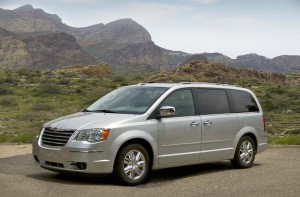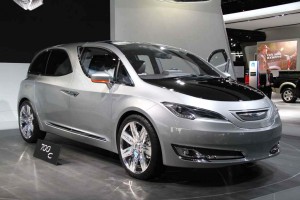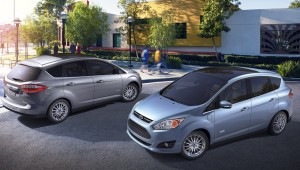
The Chrysler Town & Country may end its long run in 2014, when one of the maker's two minivans is expected to get a radical makeover.
The company that invented the modern minivan still sees a place for “people carriers” in its line-up, but only one will be the classic soccer mom-mobile, according to Chrysler CEO Sergio Marchionne.
The maker currently has two models, the Chrysler Town & Country and Dodge Grand Caravan, that will continue in production through at least 2014, but it has been sending mixed signals about whether they will both remain in the line-up going forward as sales continue to tumble, buyers looking for hipper alternatives. Now, it appears, only one will remain, the other brand getting an alternative approach.
“People grow out of minivans,” Marchionne concluded during a meeting with reporters at the North American International Auto Show. The challenge is to find an alternative that can maintain its appeal – something Chrysler thinks it may have come up with.

Chrysler tested the waters for a more radical minivan alternative with the 700C concept unveiled at last year's Detroit Auto Show..
Though there had been earlier attempts to develop a family-sized minivan, notably from Volkswagen, it was Chrysler that profitably delivered the first true modern model in 1984, kicking off a new segment that soon surged to about 1.4 million annual sales.
But just as quickly, the minivan became an object of derision, the “soccer mom-mobile,” and while it proved essential for many families as a life-stage vehicle, most owners would quickly jump to alternatives as their children grew older. And other potential buyers would sacrifice the minivan’s convenience and flexibility to be seen in hipper SUVs and crossovers.
That has led both of Chrysler’s Detroit rivals to abandon the segment, along with all but three foreign-owned brands, Toyota, Nissan and Honda.
Though segment sales rebounded slightly in 2012, to about 500,000, the minivan market didn’t keep pace with the overall double-digit surge in U.S. car sales. For its part, Chrysler produced about half of those vans, 141,000 of the Dodge models and 111,000 of the more expensive Town & Country.

Ford aims to increase the appeal of its small minivan alternative by giving the C-Max a unique hybrid and plug-in-only powertrain mix.
For now, that’s enough to keep the company’s only remaining minivan plant in Windsor, Ontario running at close to full speed. But Marchionne and his planning team have been wondering for how much longer – and looking for ways to either boost demand or switch to an alternative.
The maker tried to generate some enthusiasm at the 2012 Detroit Auto Show with the 700C concept, but got little traction from the prototype.
“We spend a lot of time studying scenarios, trying out designs that could work in each scenario so we’re ready whichever way it goes,” said Ralph Gilles, Chrysler’s design director, recently suggested in an interview.
It seems that the scenario which is generating the most positive feedback both inside the company and in consumer clinics, will result in one of the two current minivans being converted to a more crossover-like vehicle.
“We’re going to be present with both brands in the people-carrier business. (However,) we’re only going to have one with a set of sliding doors,” said Marchionne during his media roundtable.
The new models will share the same, next-generation platform to maximize both flexibility and economies of scale, and will continue to roll out of the Windsor assembly plant. Meanwhile, the goal is to offer a variety of variants, including both long and short-wheelbase versions, though the shorter model, Marchionne suggested, may not be available at the launch of the new products – likely to come in the 2015 model-year.
“It was important,” he noted, “to have that flexibility built into the architecture” in order to maximize the potential market.
No one is saying what sort of volume aspirations Chrysler has, though at the very least it would certainly like to fill up the Canadian plant which, at maximum straight-time capacity could hit 300,000 or more vehicles a year. The maker’s other plants have been shifting to a more flexible manufacturing system, however, and potentially could add production should the alternative people carrier approach connect with buyers.
And that includes buyers around the world, a key reason why Chrysler is developing both long and short-wheelbase versions of the new models. The U.S. maker is providing an increasing range of products for its Italian alliance partner Fiat, and its various brands. Indeed, going forward, Chrysler models will be used almost exclusively in Europe to flesh out the long-struggling Lancia brand. The smaller van or people mover would likely have more appeal in that market than the current, long-wheelbase model.
Chrysler isn’t the only maker desperately seeking an alternative to the maligned minivan. Ford, for example, has had some modest success with the big Flex “people-mover,” and just introduced a smaller model, the C-Max, to the American market. That van-like model was developed in Europe as part of the One Ford globalization strategy. That makes it easier to sell just a small number of the C-Max models in the U.S. and still make money on it.
